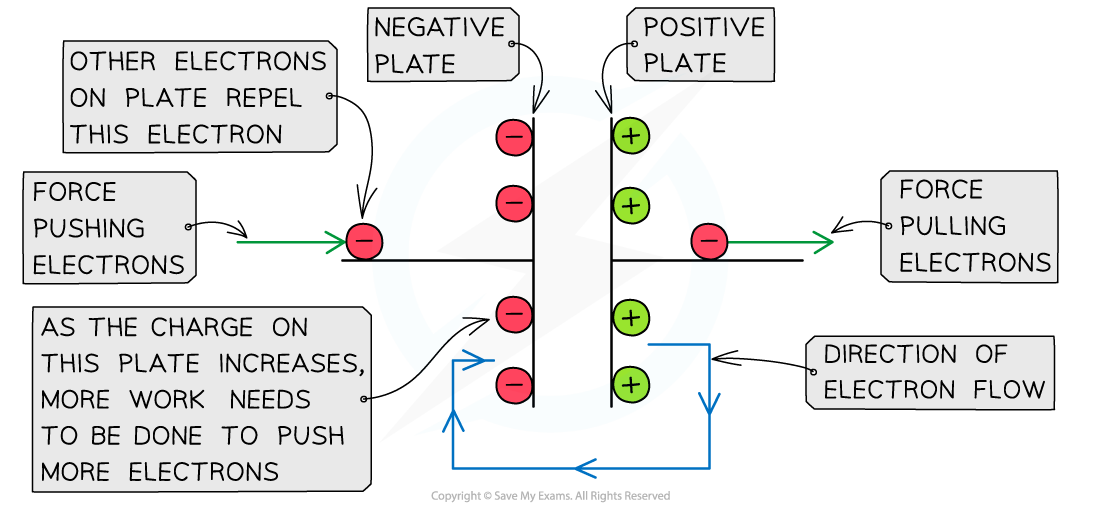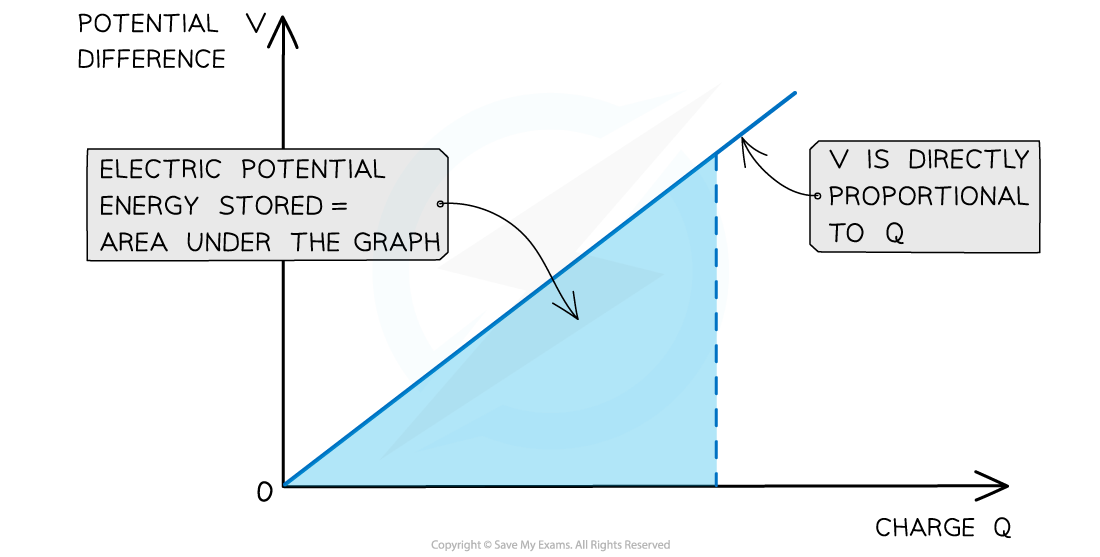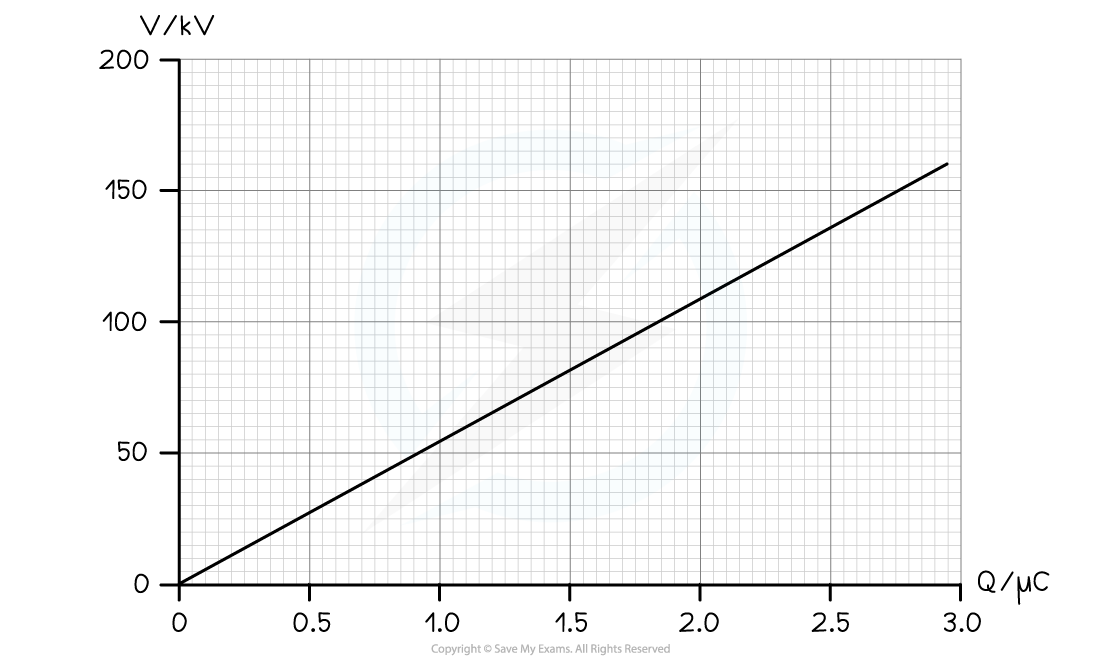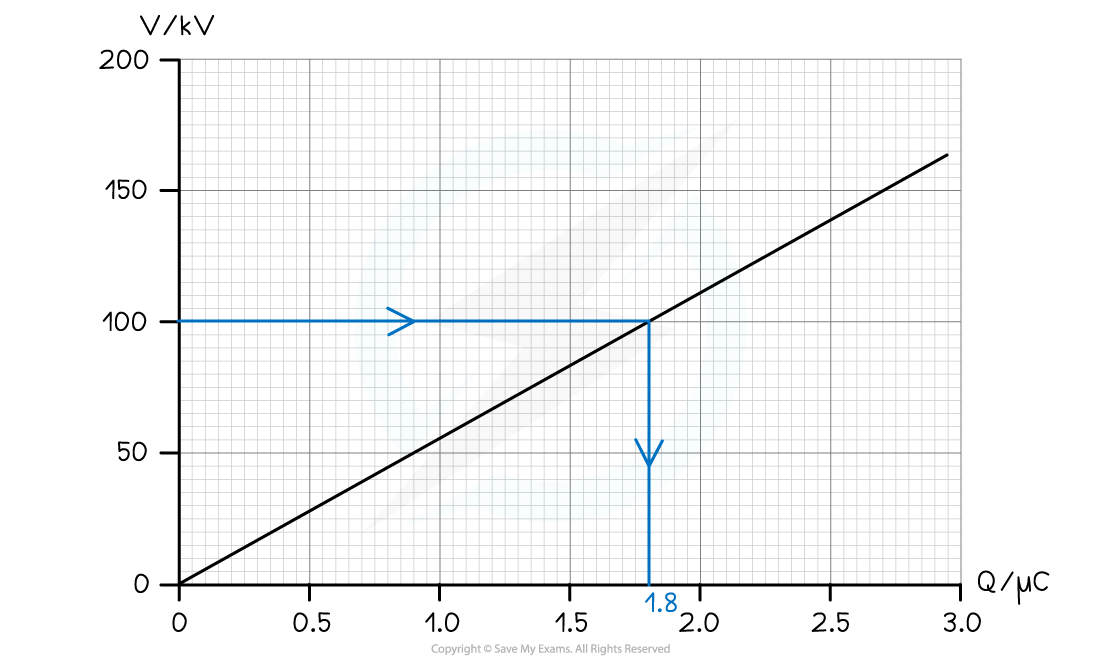Area Under a Potential–Charge Graph (Cambridge (CIE) A Level Physics): Revision Note
Exam code: 9702
Area under a potential–charge graph
When charging a capacitor, the power supply transfers electrons onto one plate, giving it a negative charge, and transfers electrons away from the other plate, giving it a positive charge
It therefore does work on the electrons, which increases their electric potential energy
At first, a small amount of charge is pushed onto the negative plate, then gradually, this builds up
Adding more electrons to the plate is relatively easy at first since there is little repulsion
As the charge of the negative plate increases i.e. becomes more negatively charged, the electric repulsion between the electrons increases
This means a greater amount of work must be done to increase the charge on the negative plate
Charging a capacitor

As the charge on the negative plate builds up, more work needs to be done to add more charge
The relationship between the potential difference and charge on a capacitor is:
The potential difference V across the capacitor increases as the amount of charge Q increases
In other words, the charge Q on the capacitor is directly proportional to its potential difference V
The graph of charge against potential difference is therefore a straight-line graph through the origin
Therefore, the electric potential energy stored in the capacitor can be determined from the area under the potential-charge graph
Graph of potential difference against charge

The electric potential energy stored in the capacitor is the area under the potential-charge graph
Worked Example
The variation of the potential V of a charged isolated metal sphere with surface charge Q is shown on the graph below.

Using the graph, determine the electric potential energy stored on the sphere when charged to a potential of 100 kV.
Answer:
Step 1: Determine the charge on the sphere at the potential of 100 kV

From the graph, the charge on the sphere at 100 kV is 1.8 μC
Step 2: Calculate the electric potential energy stored
The electric potential energy stored is equal to the area under the graph up to 100 kV
Using the area of a triangle:
Substituting the values into the equation gives:
Examiner Tips and Tricks
Remember to always check the units of the charge–potential difference graphs. The charges can often be in µC or the potential difference in kV! The units must be in C and V to get a work done in J.

Unlock more, it's free!
Did this page help you?